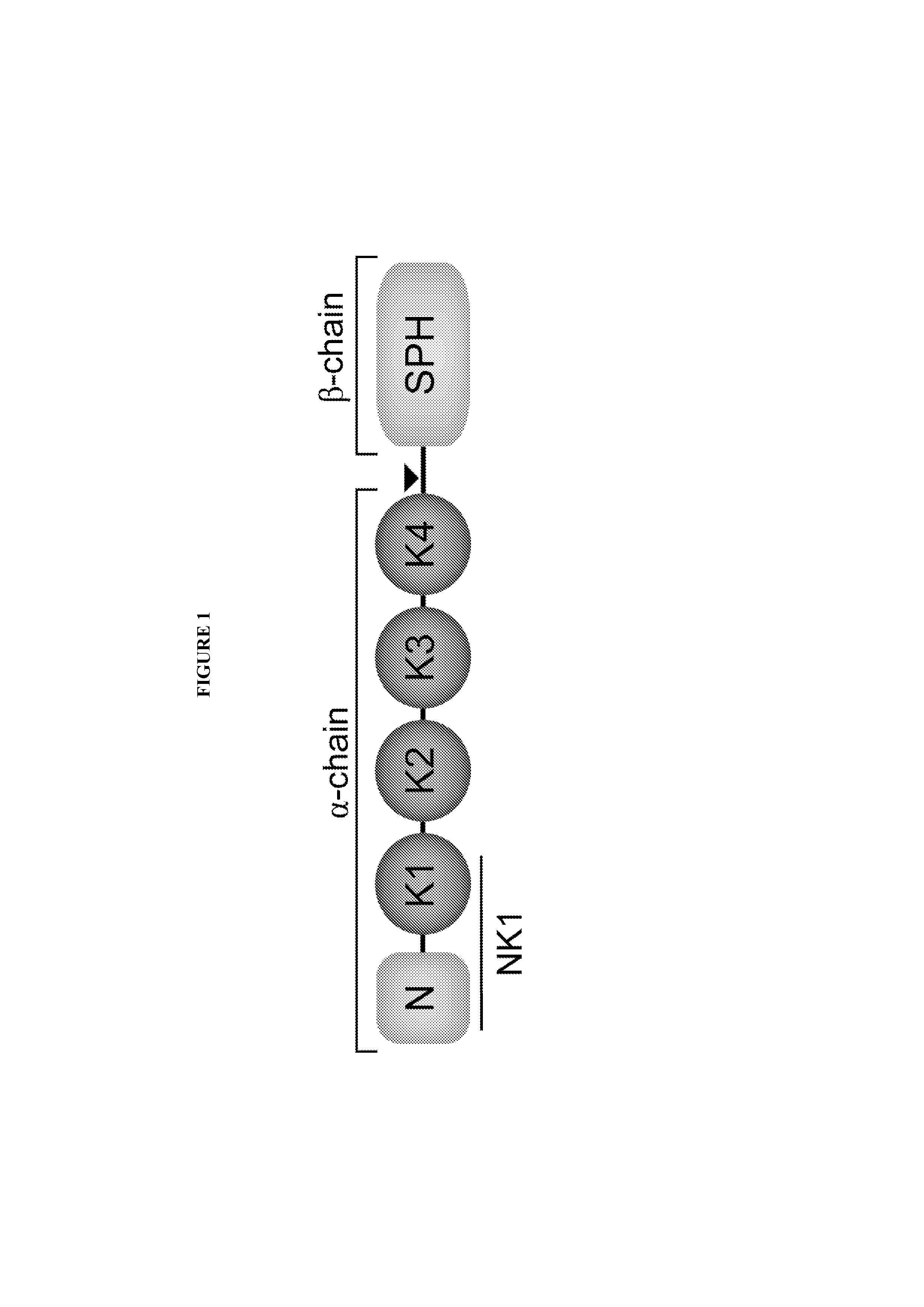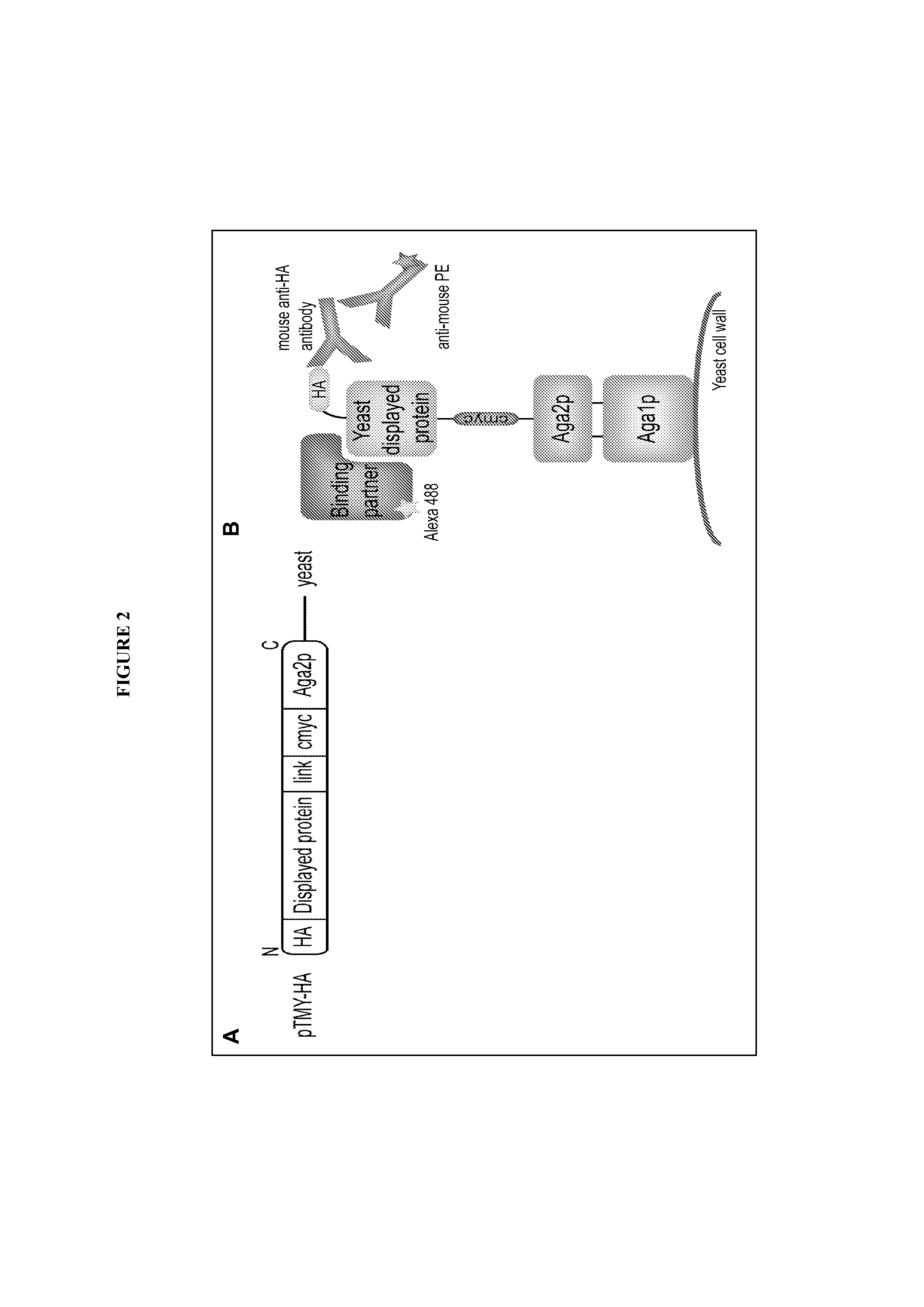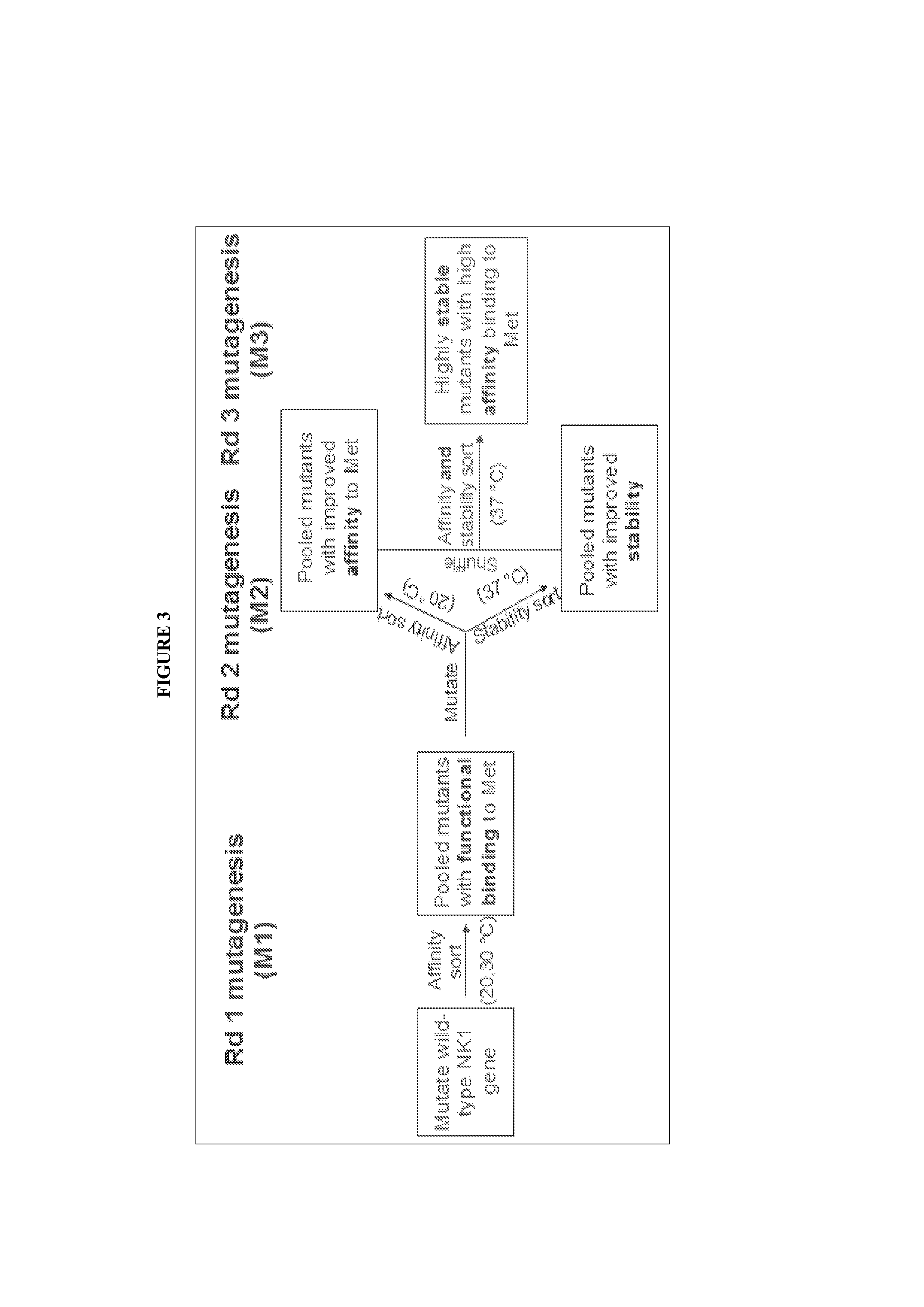Hepatocyte growth factor fragments that function as potent met receptor agonists and antagonists
a technology of hepatocyte growth factor and met receptor, which is applied in the field of polypeptide variants, can solve the problems of limited studies to develop met-targeted molecular imaging agents for non-invasive visualization of met expression in vivo compared to other cancer targets, and achieve the effects of promoting tissue repair and organ regeneration, promoting appropriate cell proliferation and migration, and reducing fibrosis
- Summary
- Abstract
- Description
- Claims
- Application Information
AI Technical Summary
Benefits of technology
Problems solved by technology
Method used
Image
Examples
example 1
1.1 Protein Engineering of NK1 Through Yeast Surface Display
[0263]Yeast surface display is a powerful directed evolution technology that has been used to engineer proteins for enhanced binding affinity, proper folding, and improved stability. Combinatorial libraries of NK1 proteins were displayed on the surface of the yeast strain Saccharomyces cerevesiae through genetic fusion to the yeast mating agglutinin protein Aga2p. Aga2p is disulfide bonded to Aga1p, which is covalently linked to the yeast cell wall. In contrast to most yeast display studies, the construct we used here tethered the displayed NK1 proteins to the N-terminus of Aga2p (FIG. 2). It was found for this ligand-receptor system that this orientation reduced steric constraints of receptor and antibody labeling described below. The NK1 proteins were flanked by N-terminal hemagglutinin (HA) and C-terminal c-myc epitope tags, which were used to confirm expression of the construct on the yeast cell surface and to quantitat...
example 2
2.1 Soluble Production of Wild-Type NK1 and NK1 Mutants in the Yeast Strain P. Pastoris
[0275]Briefly, DNA encoding for wild-type NK1, M2.1, or M2.2 containing an N-terminal FLAG epitope tag (DYKDDDDK) and a C-terminal hexahistidine tag were cloned into the secretion plasmid pPIC9K. Constructs were transformed into P. pastoris, and were selected for growth on YPD-agar plates containing 4 mg / mL Geneticin and screened for NK1 expression by Western blotting of culture supernatant. FIG. 7A shows that M2.1 and M2.2 express well at 30° C., while wild-type NK1 expresses at much lower levels. This data is in agreement with previous studies that report engineering for enhanced protein stability using yeast-surface display also confers improved recombinant expression levels. However, reducing the expression temperature to 20° C. enabled efficient expression of wild-type NK1 (data not shown). NK1 and mutant expression were scaled up to 0.5 L in shake flask cultures and purified using immobiliz...
example 3
3.1 Point Mutations at the NK1 Homodimerization Interface
[0279]Residue N127 lies within the linker region connecting the N and K1 domains (FIG. 1). The side chain of this asparagine residue forms two hydrogen bonds. The N127D variant was frequently observed among the library-isolated variants. (Tables 2 and 3). To probe the effects of the N127D mutation within M2.2 on biological activity, a series of point mutants were generated at this position. An alanine residue transforms wild-type NK1 from an agonist into an antagonist by disrupting stabilizing interactions of the NK1 homodimer. The effects of mutations to lysine or arginine at this position were tested. These substitutions introduce steric and electrostatic obstructions through bulky, charged side-chains.
[0280]In addition, the point mutant D127N was analyzed; this reverts this position back to the wild-type asparagine residue. Within the context of M2.2, which contains the N127D mutation, these mutations are referred to as D12...
PUM
| Property | Measurement | Unit |
|---|---|---|
| temperature | aaaaa | aaaaa |
| temperature | aaaaa | aaaaa |
| temperature | aaaaa | aaaaa |
Abstract
Description
Claims
Application Information
 Login to View More
Login to View More - R&D
- Intellectual Property
- Life Sciences
- Materials
- Tech Scout
- Unparalleled Data Quality
- Higher Quality Content
- 60% Fewer Hallucinations
Browse by: Latest US Patents, China's latest patents, Technical Efficacy Thesaurus, Application Domain, Technology Topic, Popular Technical Reports.
© 2025 PatSnap. All rights reserved.Legal|Privacy policy|Modern Slavery Act Transparency Statement|Sitemap|About US| Contact US: help@patsnap.com



